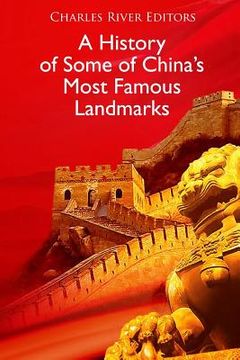Reseña del libro "A History of Some of China's Most Famous Landmarks (en Inglés)"
*Includes pictures *Includes online resources and a bibliography for further reading China has always fascinated outsiders, much in the same way that distant light fascinates someone looking down a dark road. It is both familiar and mysterious, ancient and new, and fully understanding it seems to always remain just out of reach. From the Great Wall to the ancient teachings of Confucius, China's natural and man-made wonders have been topics of interest among Westerners since the Middle Ages and the pursuit of trade routes both by land and sea, amazing Marco Polo and 19th century British expeditions in similar ways despite the passage of several centuries between them. The Great Wall of China is perhaps the wonder of the world that has most captured the human imagination, and as the quotes about it indicate, the wall has acquired special significance even outside of China. The places and ways in which it has taken hold vary greatly, but one thing is certain: the Great Wall of China is as amazing as it is mysterious, and it's as mundane as it is magical. Naturally, the Wall has become the most recognizable symbol of China, used for both aggrandizement and criticism. Nationalists see it as a symbol of China's peaceful nature, engineering capability, and historic longevity, while detractors see the Wall as the embodiment of China's backwardness, closed-mindedness, and hubris. While history allots arguments for the claims of each side, both of them are colored by Great Wall mythology and current geopolitical concerns. Though the wall can symbolize all of these things about China, it is important to remember that the many long walls. upon some of which the current landmark was constructed, were put up by specific people for specific purposes. People across the world were excited when it was revealed in 1974 that archaeologists had uncovered a new and amazing find: an underground army consisting of thousands of clay soldiers, still standing at their posts despite being over 2,000 years old. In addition to the remarkable feats of craftsmanship and the almost unimaginable size and scale of the Terracotta Army, the sculpted statues seemed to bear testimony of something that modern people could not quite wrap their minds around, representing a time when China was born almost 200 years before Christ. The hope for many was that this remarkable army could reveal the secrets of China's first emperor, Qin Shi Huang, a man who united seven warring tribes into one of the most powerful nations on earth. The tremendous temples, captivating churches, magnificent mosques, and palatial places of worship around the world come in all shapes and sizes, and pay tribute to an array of gods and deities, but they all share one thing in common. These glorious structures, the pride and joy of a religion, are sacred spaces for prayer, meditation, and the veneration of one's god or gods. As such, they are designed and adorned with the most divine and irreplaceable hallmarks to honor their holy fathers and mothers. While the world today is a far cry from perfect, laws, for the most part, protect these places from those who hold misguided beliefs or harbor misplaced resentment towards its communities. The story of the Porcelain Tower of Nanjing includes all of these aspects, and then some. Its origins come from a cradle of creativity and enlightenment fostered by one fabled emperor from the Ming Dynasty bloodline; indeed, it was the pièce de résistance of his career. The Porcelain Tower's history also bore witness to an epoch of turbulence in Eastern history, set in one of the oldest countries in existence - China. The inimitable pagoda towered proudly over the city for some 4 centuries, but it was precisely this perilous patch that would claim what was once considered one of the Seven Wonders of the World.

